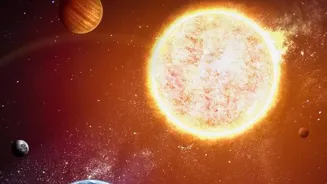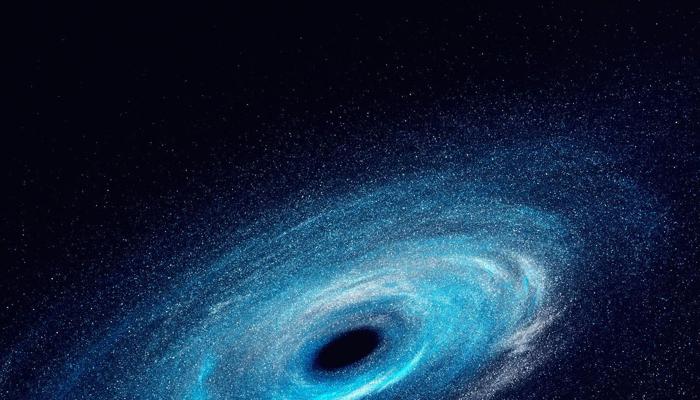Unravel the mysteries of the Sun's influence on our solar system. Dive into the cosmic dance that shapes our world
In the grand cosmic theatre of our solar system, the Sun plays the starring role. It is
more than just a bright light in the sky. The Sun is the heart of our planetary family, holding everything together through its immense gravitational pull and providing the energy that sustains life on Earth.
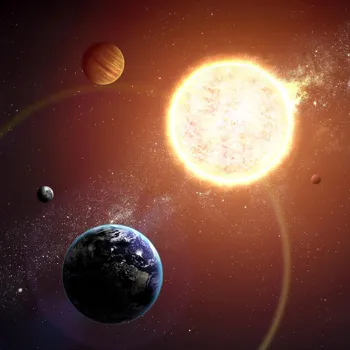
Understanding the Sun’s influence is key to grasping how our solar system works and how it affects our lives. Its activity influences everything from Earth's climate patterns to the orbits and characteristics of all the celestial bodies that dance around it.
The Sun's gravity shapes our solar system's stability and structure
The Sun's gravity is what keeps all the planets, asteroids, comets, and other space matter in orbit. Imagine the Sun as a powerful anchor, tethering each planet to it with invisible ropes of gravity. The closer a planet is to the Sun, the stronger the gravitational pull, and the faster it orbits.
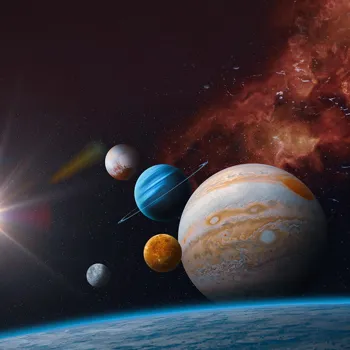
Mercury, the innermost planet, zips around the Sun in just 88 Earth days, while Neptune, the farthest planet, takes a whopping 165 Earth years to complete one orbit.
This gravitational dance creates the stable and predictable structure of our solar system, preventing planets from drifting off into the cold emptiness of space.
Sun's nuclear fusion powers life on Earth
The Sun is an enormous ball of hot gas, primarily hydrogen and helium, constantly undergoing nuclear fusion in its core. This process of nuclear fusion releases tremendous amounts of energy in the form of light and heat, which radiates outwards into space.

This solar radiation is the primary source of energy for our entire solar system. It warms the planets, drives weather patterns, and powers photosynthesis in plants, which forms the base of the food chain on Earth. Without the Sun's energy, Earth would be a frozen, lifeless wasteland.
The Sun is a dynamic star with sunspots, flares, and ejections
The Sun isn't a static, unchanging object; it is a dynamic and active star. It has a magnetic field that goes through cycles of activity, resulting in phenomena like sunspots, solar flares, and coronal mass ejections.
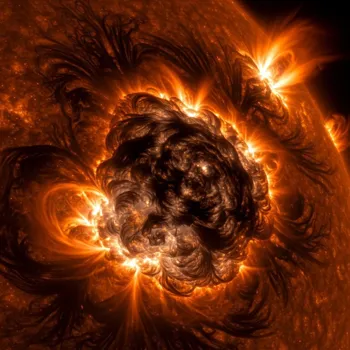
Sunspots are cooler, darker areas on the Sun's surface caused by magnetic activity. Solar flares are sudden bursts of energy that can release huge amounts of radiation into space.
Coronal mass ejections are even larger eruptions of plasma and magnetic fields from the Sun's corona, or outer atmosphere.
Solar activities impact Earth's tech and space, auroras show beauty
These solar activities can have a significant impact on Earth. Solar flares and coronal mass ejections can disrupt radio communications, damage satellites, and even cause power outages on Earth.

Auroras, or the Northern and Southern Lights, are a beautiful manifestation of the interaction between solar particles and Earth's atmosphere. Space weather, driven by the Sun's activity, is an area of active research, as scientists strive to better understand and predict its effects on our planet.
Monitoring solar activity helps protect our infrastructure and ensure the safety of astronauts in space.
Sun study informs stellar evolution and exoplanets, expanding universe understanding
Studying the Sun is not just about understanding our own solar system. It also provides insights into the lives of other stars in the universe. By observing the Sun, scientists can learn about stellar evolution, magnetic fields, and the processes that shape galaxies.
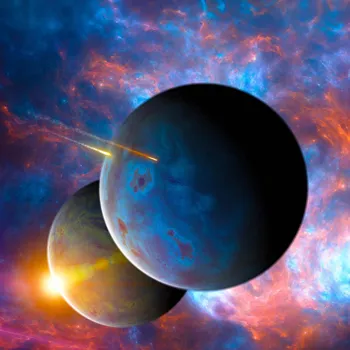
The Sun serves like a close-up laboratory for studying stars in general. The knowledge gained from studying the Sun helps us search for and understand exoplanets – planets that orbit other stars – and the possibility of life beyond Earth.
The better we understand the Sun, the better we understand the universe.
AI Generated Content. Glance/InMobi shall have no liability for the content